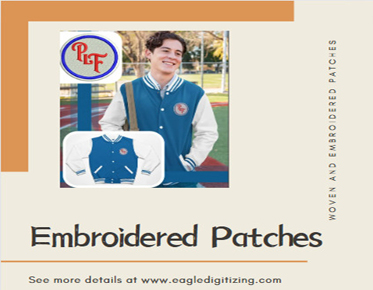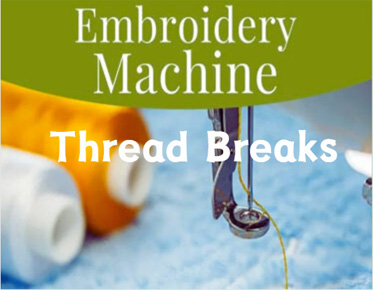Understanding the Differences Between Woven and Embroidered Patches
Patches have become synonymous with identity and expression, serving as visual markers of affiliation and personal style. Woven and embroidered patches stand out for their distinct characteristics and applications among the plethora of patch varieties. In this comprehensive guide, we delve into the nuances that differentiate woven patches from their embroidered counterparts, providing insights into their construction, appearance, durability, applications, customization options, cost considerations, versatility, maintenance, and trends.
Woven Patches
Construction and Materials
- Weaving Process: Woven patches are crafted through a meticulous weaving process, where threads
intersect to form intricate designs. This weaving technique allows for
precise detailing and clarity in the final product.
- Types of Threads Used: Woven patches employ a variety of threads, often consisting of polyester or cotton, to achieve desired colors and textures. These threads are intricately woven together to create the patch design with exceptional precision.
Appearance
- Smooth Texture: The surface
of woven patches boasts a smooth texture, enhancing the clarity of
intricate designs and allowing for fine detailing.
- Intricate Detail: Woven patches excel in capturing intricate detail, showcasing complex patterns and imagery with remarkable clarity and precision.
Durability
- Resistant to Fraying: Thanks
to their woven construction, these patches are highly resistant to
fraying, ensuring longevity and maintaining their aesthetic appeal over
time.
- Longevity: Woven patches are known for their durability, withstanding the rigors of daily wear and tear without compromising their integrity or visual appeal.
Embroidered Patches
Construction and Materials
- Stitching Process: Embroidered patches are created through a meticulous stitching process, where threads
are intricately stitched onto a base fabric to form the desired design.
This labor-intensive technique results in patches with a raised, textured
surface.
- Threads and Fabrics Used: Embroidered patches utilize a diverse range of threads, including rayon, polyester, and metallic options, to achieve vibrant colors and textures. These threads are meticulously stitched onto twill or felt backings, creating a visually striking design.
Appearance
- Textured Surface:
Embroidered patches feature a textured surface, characterized by raised
threads that create depth and dimension within the design.
- Raised Design: The raised design of embroidered patches adds tactile appeal, making them visually captivating and distinct from their woven counterparts.
Durability
- Vulnerability to Fraying: Despite
their visual appeal, embroidered patches may be more susceptible to
fraying along the edges due to the raised stitching.
- Lifespan: With proper care, embroidered patches can maintain their appearance and integrity for an extended period, serving as enduring symbols of identity and style.
Applications
Woven Patches
- Uniforms and Workwear: Woven
patches are commonly used in uniforms and workwear to denote affiliation
and rank, offering a professional and personalized touch.
- Branding and Marketing: Businesses leverage woven patches as effective branding tools, incorporating logos and insignias onto garments, bags, and promotional materials.
Embroidered Patches
- Fashion and Accessories: Embroidered
patches adorn fashion garments and accessories, adding flair and
personality to everyday ensembles.
- Commemorative and Souvenir Items: Embroidered patches serve as cherished mementos, commemorating events, milestones, and destinations with sentimental value.
Customization Options
Woven Patches
- Limitations in Design Complexity: Woven patches may have limitations in depicting highly intricate
designs due to the weaving process.
- Color Options: Despite design limitations, woven patches offer a wide array of color options, allowing for vibrant and visually appealing compositions.
Embroidered Patches
- Detailed Designs: Embroidered
patches excel in capturing intricate details, offering unparalleled
fidelity in design reproduction.
- Variety of Thread Colors: With an extensive range of thread colors available, embroidered patches offer endless possibilities for customization and creativity.
Cost Considerations
Woven Patches
- Cost-Effective for Large Quantities: Woven patches are cost-effective when ordered in bulk quantities,
making them ideal for large-scale projects and promotions.
- Minimal Setup Fees: With minimal setup fees involved, the cost per patch decreases significantly with increasing order volumes, offering savings for businesses and organizations.
Embroidered Patches
- Higher Cost Per Patch: Embroidered
patches may entail a higher cost per patch compared to woven patches,
particularly for smaller orders or intricate designs.
- Additional Charges for Intricate Designs: Intricate designs may incur additional charges due to the labor-intensive nature of embroidery, adding to the overall cost.
Versatility
Woven Patches
- Suitable for Fine Detail:
Woven patches are well-suited for depicting fine detail and intricate
patterns with exceptional clarity.
- Ideal for Small Sizes: Their ability to maintain clarity in small sizes makes woven patches ideal for applications where space is limited or design intricacy is paramount.
Embroidered Patches
- Best for Bold Designs:
Embroidered patches excel in portraying bold designs with dynamic textures
and striking contrasts.
- Limited by Size and Detail: Due to the nature of embroidery, these patches may have limitations in depicting fine detail in smaller sizes, making them more suitable for larger designs.
Maintenance and Care
Woven Patches
- Machine-Washable: Woven
patches are typically machine-washable, allowing for easy maintenance and
upkeep without compromising their integrity.
- Resistant to Fading: Their vibrant colors resist fading, ensuring that woven patches retain their visual impact wash after wash, prolonging their lifespan.
Embroidered Patches
- Hand-Washing Recommended:
To preserve the integrity of embroidered patches, hand-washing is often
recommended to minimize wear and tear.
- Avoiding Excessive Friction: Care should be taken to avoid excessive friction during washing and handling, which may cause threads to loosen or fray, compromising the patch's appearance.
Trends and Popularity
Woven Patches
- Emerging Trend in Fashion:
Woven patches are experiencing a surge in popularity within the fashion
industry, appearing on runways and streetwear collections as coveted
embellishments.
- Growing Popularity in Branding: Businesses are increasingly incorporating woven patches into their branding strategies, capitalizing on their visual appeal and versatility in marketing campaigns.
Embroidered Patches
- Timeless Appeal in Fashion:
Embroidered patches boast a timeless appeal in fashion, enduring as
beloved embellishments on garments and accessories.
- Established Presence in Traditional Crafts: With roots in traditional crafts and artisanal techniques, embroidered patches continue to captivate enthusiasts with their enduring charm and craftsmanship.
Conclusion
In conclusion, woven and embroidered patches
present distinct features and advantages, serving a variety of needs and
purposes. Whether you prioritize crisp precision or eye-catching textures,
there's a patch tailored to suit your requirements. By discerning the
differences between woven and embroidered patches, individuals and businesses
can make informed decisions, enhancing their branding, fashion statements, and
personal expressions. Partner with Eagle Digitizing for premium embroidery patch services, ensuring your patches
reflect excellence in design and craftsmanship.



